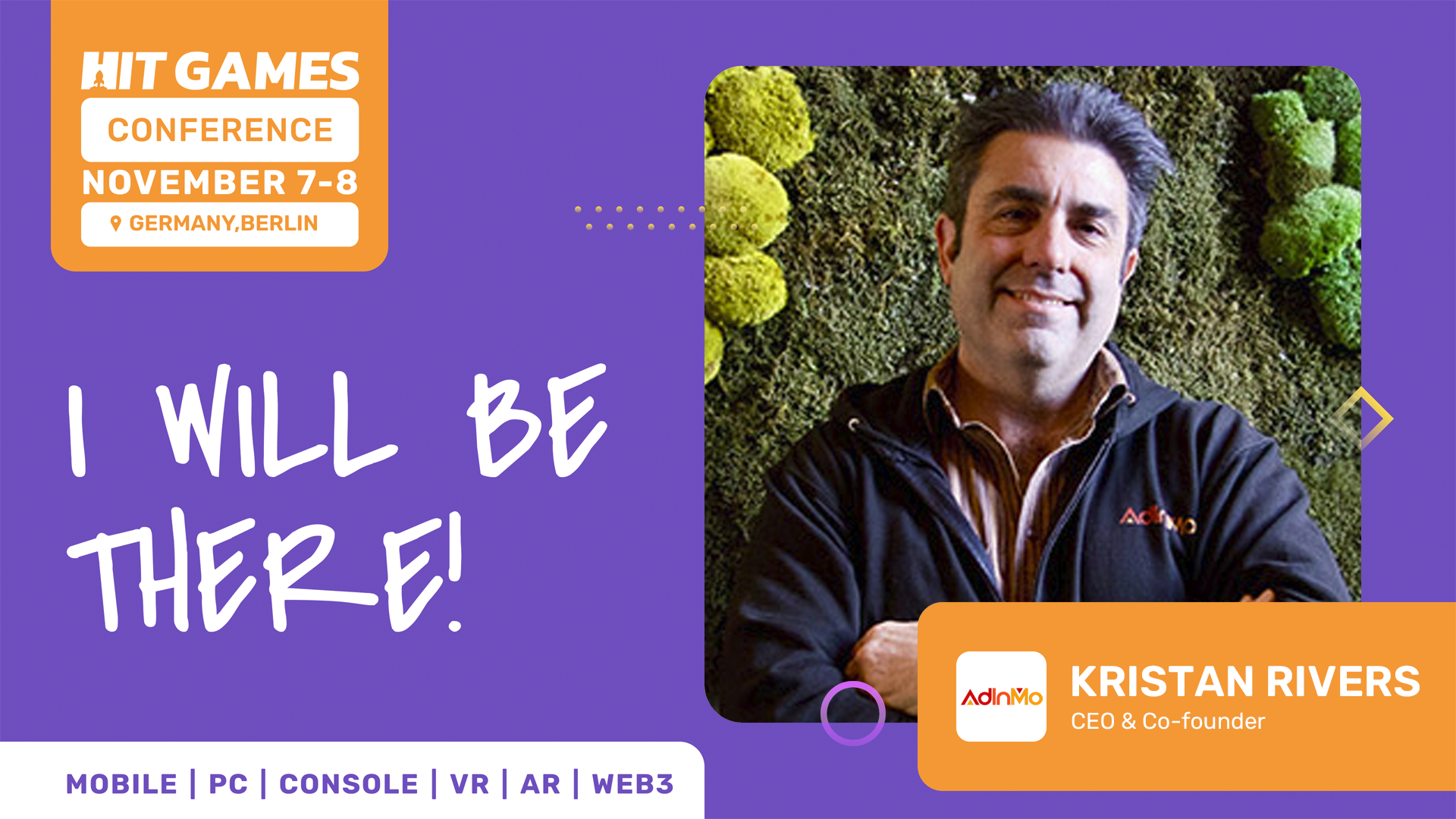Trend or Table-stakes? Have your say on the future of Hybrid Monetization in Gaming

AdInMo Advisor Tiffany Keller shares her views from her career at the intersection of game development and in-game advertising on the evolution of monetization trends.
We want to hear your views as well! Complete this 3 minute survey to be entered to win a Gamesforum ticket and shape the future of monetization tooling.
Owning and putting your user data to work for you has never been more important than after the advent of Apple Inc’s SK Ad Network back in 2018. It changed the media buying landscape by masking iOS mobile device identifiers if users don’t opt into sharing for each app, rather than previously relying on users opting out of sharing their data.
Also known as App Tracking Transparency Framework, the opt-in requirement flipped the rate of users who could be tracked across apps on its head: targeted ads used to represent the majority of ad monetization and acquired users for games when by default the identifier was shared. After opt-in was required anywhere from 80-95% of players opted to not be tracked. Per Apple requirements they can instead be marketed to by “context” driven ads such as showing ads for Marvel games on top of other superhero driven content that doesn’t rely on identifying attributes like past browsing.
Fast forward to 2024, and a recent Gamesforum study found that Data Use/Segmentation and Privacy Changes are still the biggest challenges for games marketers today.

These privacy changes incentivised game publishers to guard their player data fiercely in a term coined as “content fortresses” by marketing measurement expert Eric Seufert, as publishers could freely share their data between their different apps and develop decisioning products to effectively market their own games between subsidiary studios. Interesting paradigms emerged where a company like Take Two’s Zynga, through their acquisition of large audience game developers like Rollic and ad tech platforms like Chartboost, could learn more about their players by ingesting their own data than through tried and true demand side platforms such as Meta. By matching in-game data like likelihood to purchase or churn with top performing marketing campaigns for other Zynga games, the publisher could make the most of their valuable iOS spenders they paid a higher premium to acquire post-ATT.
Publishers who could connect the dots between their ad monetization, UA, and in-app purchase insights commanded a favorable competitive position in a market that has lost a lot of data transparency after identifiers went the wayside. It wasn’t just game publishers who adapted- some ad networks and supply side platforms evolved by investing in more than just better contextual targeting. The largest ad mediation platforms invested in new publisher tools that also amplified publisher in-app purchase monetisation efforts by matching purchase patterns with ad consumption or brand affinity.
Building a one stop shop for all game app monetization needs proves daunting though, as many publishers’ teams handling ad monetisation are totally different business units and skill sets than game product or monetization managers. The type of tools and decision points that factor into improving a game’s conversion rate may vary highly between one genre to another, while ad mediation or placement UX can be more readily standardized.
Nevertheless, rising CPIs and prioritizing high LTV users are some of the other concerns for games marketers today cited in the Gamesforum research. Rising CPIs mean that publishers must recoup that increased cost from a higher overall LTV of acquired users, but whale hunting without targeted advertising is very hit or miss. Instead a higher LTV can be achieved by growing a larger middle class of monetising users coined as “dolphins,” who monetise at lower rates than whales but are more common and responsive to monetisation best practices like starter pack pricing, payment segmentation, or battle passes.
These challenges highlight a trend to unite publishers’ ad and purchase monetisation insights, but they will likely need to experiment with organizing their different business units to best collaborate against these challenges. If this “hybrid monetization” trend is here to stay, the winning org chart and strategy will shape how platform partners design the next generation of monetisation tools to engender alliances between game content fortresses and contextual ad network segmentation. Monetization platform partners who can provide tools that handle both in-app purchase and ad monetisation needs of publishers will be best poised to unlock hybrid monetisation insights and cross team collaboration.
More…
AdInMo and Kwalee take in-game ads to the next level
An innovative new integration with AdInMo powers Kwalee’s popular truck simulation game Tow N Go to drive monetization and support user acquisition across its portfolio of mobile games. We're excited to unveil a new integration with global mobile game publisher and...
Maximizing Reach and Revenue: HGC 2023
Our CEO and Co-founder, Kristan Rivers, will be speaking at HGC23 in Berlin next week. Hit Games Conference (HGC) is a popular B2B gaming event runing for two days and featuring talks and panel discussions with many of gaming's leading experts.Mobile Game Publishing:...
Optimizing for revenue not joy: Gamesforum London and the mobile gaming monetization predicament
Has the mobile games industry's relentless pursuit of revenue optimized the joy out of the player experience? I’ve just returned home from a two week business trip involving a lot of trains across Europe, with the last stop including London and the always-educational...





